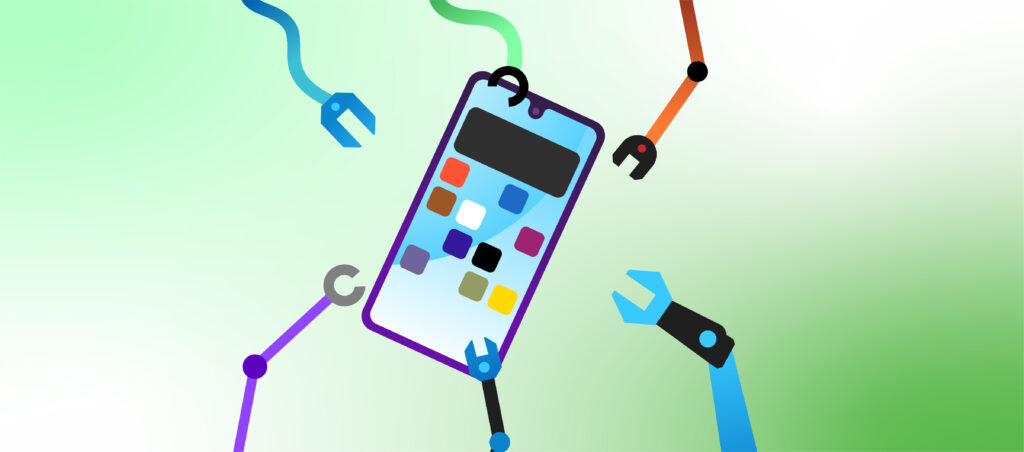
The Importance of Accessibility in App Development
By Udit Agarwal

In today’s technologically driven world, mobile applications have become integral to our daily lives, serving various purposes from communication to entertainment, education, and beyond. However, the rapid growth of the digital landscape also highlights the importance of ensuring that these applications are accessible to all users, including those with disabilities. Accessibility in app development is not just a legal requirement; it’s a moral imperative and a pathway to inclusivity, empowerment, and innovation.
Inclusivity and Equal Access:
Accessibility ensures that individuals of all abilities can engage with and benefit from digital experiences. People with disabilities, whether visual, auditory, cognitive, or motor-related, should have equal access to the functionalities and content of mobile apps. By designing apps with accessibility in mind, developers contribute to a more inclusive digital environment, fostering a sense of belonging and reducing barriers for users with disabilities.
Legal and Ethical Responsibility:
Many countries have regulations that mandate digital accessibility for individuals with disabilities. Laws such as the Americans with Disabilities Act (ADA) in the United States and the Web Content Accessibility Guidelines (WCAG) internationally require that digital content, including mobile apps, be accessible to all. Non-compliance exposes businesses to legal risks and raises ethical questions about equal opportunities and social responsibility.
Expanding User Base:
The digital divide should not exclude people with disabilities from benefiting from the convenience and utility of mobile apps. By developing accessible apps, businesses can tap into an underserved market segment and expand their user base. Accessible apps not only accommodate users with disabilities but also cater to aging populations and individuals facing temporary impairments, thus enhancing their market reach.
Positive Brand Image:
A commitment to accessibility demonstrates a business’s values and dedication to inclusivity. When users perceive that a company prioritizes accessibility in its app development, it enhances the brand’s image and reputation. This positive association can lead to increased user loyalty, improved customer retention, and a stronger connection with the target audience.
Innovation Through Constraints:
Designing for accessibility often requires innovative problem-solving. Developers need to find creative ways to provide functionality and content in a usable manner, even for users with diverse abilities. These constraints can lead to innovative design solutions that enhance user experience for all users, not just those with disabilities.
User-Centric Design:
Focusing on accessibility prompts developers to adopt a user-centric approach. Understanding how people with disabilities interact with apps can lead to more intuitive interfaces and streamlined user experiences. It, in turn, benefits all users, creating a more enjoyable and efficient app interaction.

Long-Term Cost Savings:
Addressing accessibility during the initial app development phase is more cost-effective than retrofitting accessibility features later. By incorporating accessible design principles from the outset, developers can avoid costly rework and ensure that the app complies with accessibility standards and regulations.
Technological Advancements:
The push for accessibility has spurred technological advancements, resulting in tools, frameworks, and guidelines that aid developers in creating accessible apps. These resources facilitate incorporating Accessibility in App Development features, ultimately benefiting both users and developers.
Empowering User Independence:
Accessible apps empower individuals with disabilities to lead more independent lives. Whether it’s a navigation app for people with visual impairments or a communication app for individuals with speech difficulties, accessible apps provide tools for users to achieve tasks they might otherwise struggle with.
Creating a Barrier-Free Society:
By prioritizing Accessibility in App Development, app developers contribute to the broader goal of creating a barrier-free society. As technology becomes increasingly intertwined with daily life, ensuring equal access for all individuals, regardless of their abilities. As it becomes imperative to building an inclusive world.
Conclusion
In conclusion, accessibility in app development is not just about meeting legal requirements; it’s about creating a more inclusive, equal, and diverse digital ecosystem. By considering the needs of users with disabilities during app development, businesses can expand their reach. Thus, foster positive brand associations, drive innovation, and contribute to a society where everyone can participate fully in the digital age.